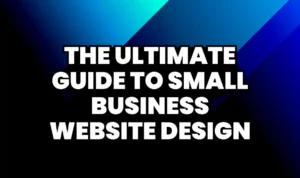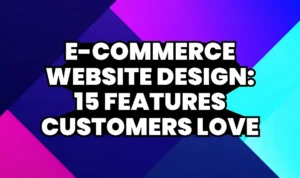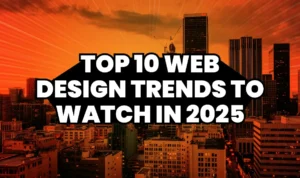Introduction
Choosing the right web design style can make or break your online presence. The ongoing debate between Minimalist vs Maximalist Web Design has designers and business owners evaluating what works best for engagement, aesthetics, and conversions. Each style has unique benefits and drawbacks, and the decision should be based on your brand, target audience, and user experience goals.
In this guide, we’ll break down the key differences between minimalist vs maximalist web design, explore their advantages and disadvantages, and show how to implement them for maximum impact. Whether you’re launching a new website or redesigning an existing one, understanding these styles is essential for a professional, conversion-driven design.

1. Understanding Minimalist Web Design
Minimalist web design focuses on simplicity, clarity, and usability. It’s characterized by clean layouts, ample white space, and limited elements that highlight key content.
- Simplicity and Focus: Minimalist designs strip away unnecessary elements, allowing users to focus on essential content.
- Faster Load Times: Fewer design elements often result in faster website speed, which positively impacts SEO and user experience.
- Elegant Aesthetics: Clean, modern visuals give websites a professional and polished appearance.
Some of the most popular minimalist vs maximalist web design examples can be seen in modern tech websites and high-end portfolio sites. Companies like Apple and Squarespace use minimalist principles to emphasize clarity and usability.
For professional implementation, our portfolio showcases minimalist designs that balance simplicity with functionality.
2. Understanding Maximalist Web Design
Maximalist web design embraces creativity, bold visuals, and rich content. It’s designed to captivate users with dynamic layouts, vibrant colors, and immersive experiences.
- Visual Impact: Maximalist designs grab attention through bold typography, imagery, and animation.
- Expressive Branding: This style allows brands to convey personality and emotion more freely.
- Engagement-Oriented: Interactive elements, layered visuals, and creative storytelling keep users engaged longer.
Maximalist websites are perfect for brands that want to stand out, such as entertainment platforms, creative agencies, or lifestyle blogs. Proper execution ensures maximalist designs enhance engagement without overwhelming users.
3. Minimalist vs Maximalist Web Design: Key Differences
| Aspect | Minimalist Design | Maximalist Design |
|---|---|---|
| Layout | Clean, simple, white space-focused | Layered, complex, visually rich |
| Color Scheme | Neutral, subtle colors | Vibrant, bold, contrasting colors |
| Typography | Simple, readable fonts | Creative, expressive fonts |
| Content Focus | Essential info only | Rich multimedia content |
| Load Speed | Fast | Can be slower due to heavy elements |
By comparing these key aspects, businesses can decide which design approach aligns with their goals. For example, a minimalist web design may suit a tech startup prioritizing functionality, while a maximalist web design may fit a creative agency seeking a memorable brand identity.
4. Impact on User Experience (UX)
User experience is the core factor when evaluating minimalist vs maximalist web design.
- Minimalist UX: Users navigate easily, with intuitive layouts and no distractions. This can lead to higher conversions for simple, action-focused websites.
- Maximalist UX: Users enjoy immersive and engaging experiences, which works well for storytelling and brand discovery but may risk slower navigation if poorly executed.
Choosing the right balance ensures your website communicates effectively while maintaining user satisfaction.
5. SEO Considerations
SEO performance is affected by design choices:
- Minimalist SEO Benefits: Clean code, fast loading pages, and simplified navigation help search engines crawl and index content efficiently.
- Maximalist SEO Challenges: Heavy graphics and complex layouts can slow down websites, negatively affecting rankings. Optimizing images, using lazy loading, and leveraging reliable hosting like Dronahost Hosting helps maintain SEO performance.
Both styles can rank well if design and optimization are balanced effectively.
6. Conversion Impact of Minimalist vs Maximalist Web Design
Both minimalist vs maximalist web design approaches affect conversions differently:
- Minimalist Conversions:
- Clear call-to-action (CTA) placement ensures users know what action to take.
- Minimal distractions increase the likelihood of completing forms, signing up, or purchasing.
- Faster loading times improve user satisfaction, reducing bounce rates.
- Maximalist Conversions:
- Engaging visuals and interactive elements can increase time on site, fostering stronger brand connection.
- Creative storytelling helps users feel emotionally connected, which can encourage conversion for premium or lifestyle products.
- Requires careful design to avoid overwhelming users and causing choice paralysis.
Using analytics tools like Google Analytics and heatmaps can guide which design elements drive the highest conversions.
7. Branding and Emotional Influence
Design style also communicates brand personality:
- Minimalist Design:
- Conveys professionalism, reliability, and modernity.
- Works well for brands focusing on trust, clarity, or tech-focused industries.
- Maximalist Design:
- Conveys creativity, fun, and uniqueness.
- Perfect for lifestyle brands, entertainment, and creative agencies wanting to make a bold impression.
Understanding your audience is key—your design should resonate with them emotionally and reflect your brand identity.
8. Implementation Tips for Minimalist Web Design
- Focus on a limited color palette to enhance clarity.
- Use white space strategically to guide users to key CTAs.
- Highlight important content using typography and spacing.
- Optimize every image for speed to maintain high performance.
Examples of minimalist design success can be found in our portfolio, where clean layouts and functional simplicity drive results.
9. Implementation Tips for Maximalist Web Design
- Use vibrant, bold colors without sacrificing readability.
- Layer visuals carefully to avoid a cluttered appearance.
- Incorporate animations and interactive elements to engage users.
- Test different layouts to ensure usability is not compromised.
Maximalist designs require careful balance, and professional execution can dramatically improve engagement and conversions. Our case studies demonstrate successful maximalist designs that captivate users.
10. Choosing the Right Style for Your Website
When deciding between minimalist vs maximalist web design, consider:
- Your Audience: Are they looking for clarity or immersive experiences?
- Your Brand Personality: Does your brand communicate professionalism or creativity?
- Your Conversion Goals: Do you prioritize fast, easy actions or storytelling that engages users?
- Website Type: E-commerce, blogs, portfolios, and corporate sites each have different optimal approaches.
In many cases, a hybrid approach works best, combining minimalist clarity with maximalist flair in key sections to attract attention and maintain usability.
11. Hosting and Performance
Regardless of design style, website speed is crucial for user experience and SEO. Maximalist websites especially benefit from reliable hosting. Using high-performance solutions like Dronahost Hosting ensures:
- Fast loading times
- Optimized image delivery
- Stable performance during high traffic
Proper hosting helps both minimalist and maximalist websites deliver an optimal user experience.
12. Conclusion
The debate of minimalist vs maximalist web design is not about right or wrong; it’s about finding the style that aligns with your brand, audience, and goals. Minimalist designs excel in clarity, speed, and professionalism, while maximalist designs thrive in engagement, creativity, and visual impact.
By understanding the strengths and weaknesses of each, and leveraging the right tools and hosting, businesses can create a website that is not only visually stunning but also drives conversions effectively.
At DevsKing, we help brands implement both styles successfully. Explore our portfolio or request a consultation to see how our team can craft a high-performing website that aligns perfectly with your goals.
FAQs
- What is minimalist web design?
A design approach focusing on simplicity, clarity, and essential elements. - What is maximalist web design?
A design style using bold visuals, vibrant colors, and immersive content to engage users. - Which design style converts better?
Minimalist designs often convert higher due to clarity and fast loading, but maximalist designs can engage users emotionally, boosting long-term conversions. - Can I combine minimalist and maximalist design?
Yes, hybrid approaches work well—minimalist for core actions, maximalist for storytelling or engagement sections. - Does design style affect SEO?
Yes, minimalist designs typically load faster and are easier for search engines to index, while maximalist designs need optimization to maintain SEO performance. - Which style suits e-commerce sites?
Minimalist designs are preferred for product-focused e-commerce, while maximalist styles work for premium or lifestyle brands seeking visual storytelling. - Is mobile responsiveness important?
Absolutely. Both styles must be mobile-friendly to maximize conversions and engagement. - Do colors influence conversions?
Yes, colors evoke emotions and guide user behavior, impacting click-through rates and purchases. - How can I choose the best style for my brand?
Consider your audience, brand personality, website goals, and type before choosing a design style. - Can DevsKing help with design implementation?
Yes, our team specializes in crafting both minimalist and maximalist websites. See our portfolio and consultation page for more.






